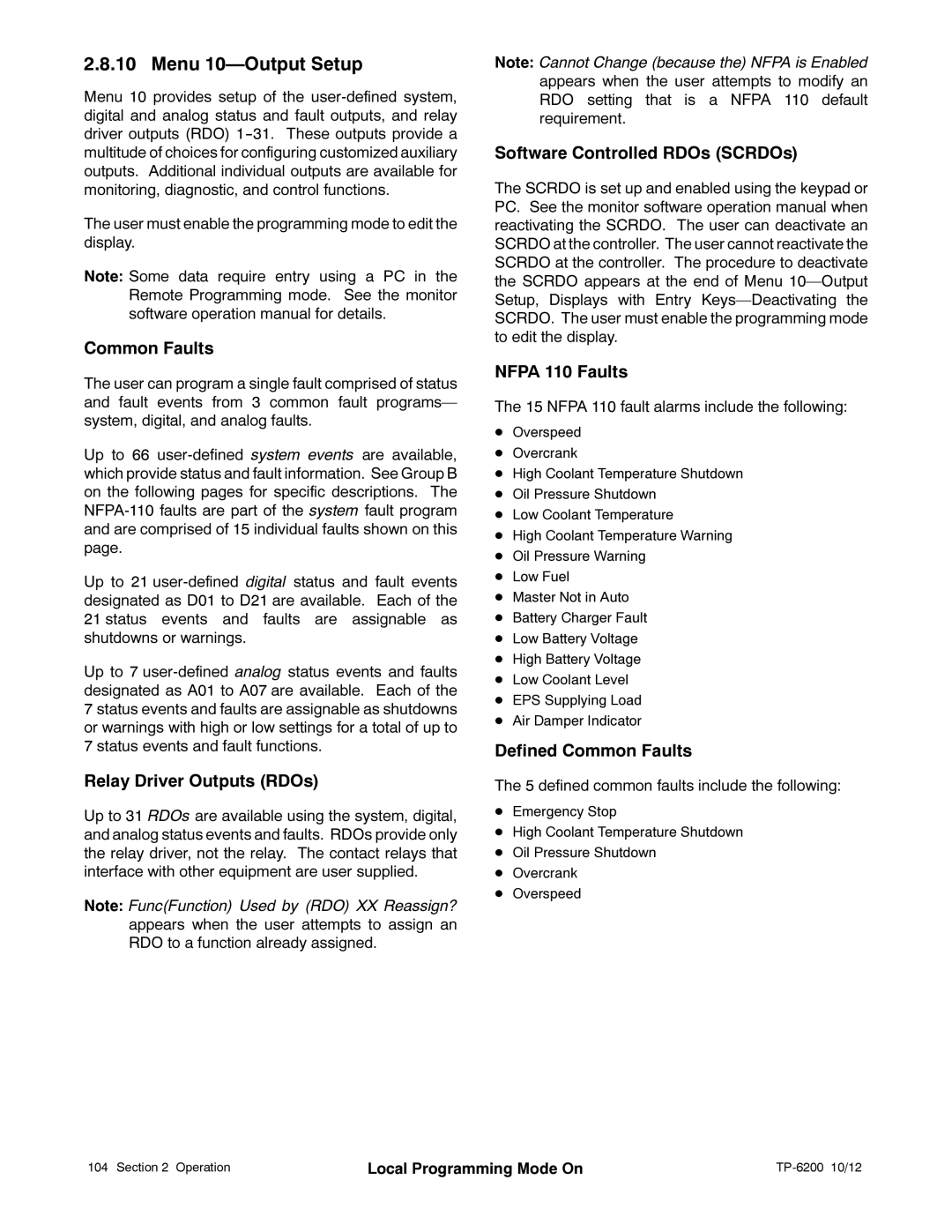2.8.10 Menu 10—Output Setup
Menu 10 provides setup of the
The user must enable the programming mode to edit the display.
Note: Some data require entry using a PC in the Remote Programming mode. See the monitor software operation manual for details.
Common Faults
The user can program a single fault comprised of status and fault events from 3 common fault programs— system, digital, and analog faults.
Up to 66
Up to 21
Up to 7
7status events and faults are assignable as shutdowns or warnings with high or low settings for a total of up to
7status events and fault functions.
Relay Driver Outputs (RDOs)
Up to 31 RDOs are available using the system, digital, and analog status events and faults. RDOs provide only the relay driver, not the relay. The contact relays that interface with other equipment are user supplied.
Note: Func(Function) Used by (RDO) XX Reassign? appears when the user attempts to assign an RDO to a function already assigned.
Note: Cannot Change (because the) NFPA is Enabled appears when the user attempts to modify an RDO setting that is a NFPA 110 default requirement.
Software Controlled RDOs (SCRDOs)
The SCRDO is set up and enabled using the keypad or PC. See the monitor software operation manual when reactivating the SCRDO. The user can deactivate an SCRDO at the controller. The user cannot reactivate the SCRDO at the controller. The procedure to deactivate the SCRDO appears at the end of Menu
NFPA 110 Faults
The 15 NFPA 110 fault alarms include the following:
DOverspeed
DOvercrank
DHigh Coolant Temperature Shutdown
DOil Pressure Shutdown
DLow Coolant Temperature
DHigh Coolant Temperature Warning
DOil Pressure Warning
DLow Fuel
DMaster Not in Auto
DBattery Charger Fault
DLow Battery Voltage
DHigh Battery Voltage
DLow Coolant Level
DEPS Supplying Load
DAir Damper Indicator
Defined Common Faults
The 5 defined common faults include the following:
DEmergency Stop
DHigh Coolant Temperature Shutdown
DOil Pressure Shutdown
DOvercrank
DOverspeed
104 Section 2 Operation | Local Programming Mode On |
|
